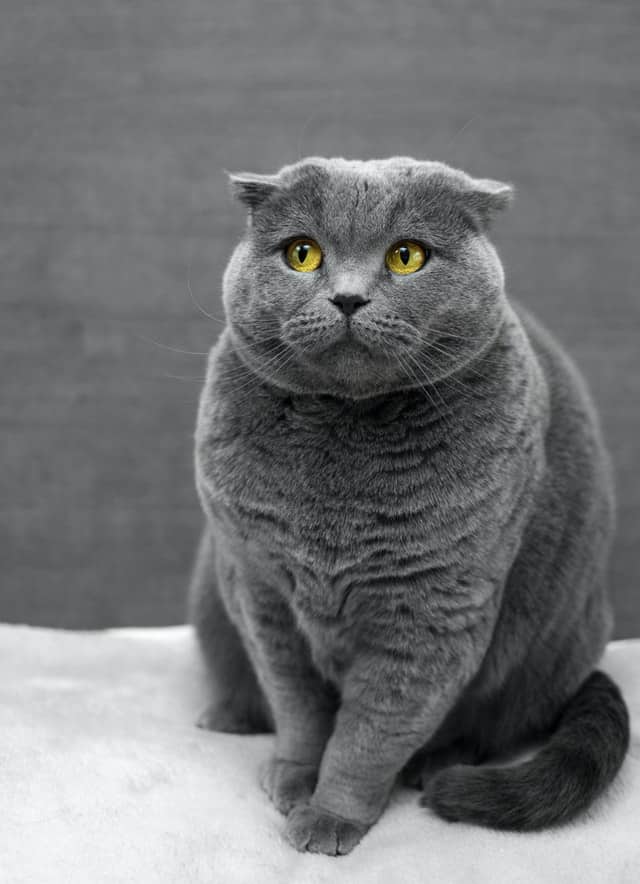
Cats can suffer from certain diseases related to their joints, just like us humans, chronic polyarthritis in cats is one of them.
Chronic polyarthritis in cats is an inflammatory limb disease that is a disease involving the limbs of the animal, usually two or more joints. It is of fundamental importance to classify the arthritic forms of the cat into erosive and non-erosive polyarthritis (based on the degree of damage to the bone and articular cartilage).
In cats, erosive polyarthritis often derives from septic states, bacterial infections sustained by L-forms and chronic progressive polyarthritis, while non-erosive polyarthritis probably has an immunosuppressive origin in it, being unfortunately not well identified.
While chronic progressive polyarthritis of the deforming type is a rare variant that usually affects older cats. Let’s see in the next paragraphs what the causes, symptoms and possible treatments of chronic polyarthritis in cats.
Causes of chronic polyarthritis in cats
Chronic polyarthritis in cats, is an immune-mediated disease, which means that the condition is a result of the immune system attacking joint tissues, it occurs exclusively in male cats regardless of whether they are neutered or not.
Unfortunately, the cause of this pathology is not known precisely, but it seems that the FeLV viruses and the feline syncytial virus, a hidden cat virus that usually does not imply problematic conditions, seem to create this condition.
In cats where both viruses are present it is possible that this disease can occur due to the formation of immune complexes. There are two forms of chronic progressive polyarthritis in cats:
- non-erosive, non-deforming and ankylosing proliferative periosteal arthritis: affects young cats with joint swelling, periarticular osteoporosis with new bone production;
- a deforming erosive rthritis: affects older cats, changes in the subchondral bone and joint subluxation.
Symptoms
In most of the times it is possible to identify the disease through the symptoms, in particular the clinical signs that we are going to specify. But it is also true that detecting polyarthritis in cats and not just this disease is not easy. Cats are very good at hiding their ailments. Despite this, if the cat should show the slightest symptom, it becomes essential to take him to the vet. The symptoms that can be detected are:
- muscular pain;
- severe fever in cats;
- joint inflammation;
- loss of mobility;
- depression;
- apathy;
- swelling of the limbs;
- joint difficulties;
- changes in behavior.
Faced with the presence of these problems, the veterinarian will already be able to hypothesize a diagnosis, but in order to be precise he will have to carry out certain tests, which we will deepen in the next paragraph. If the cat is neglected and the disease not taken into account, the animal would begin to lose weight and have difficulty walking. Chronic polyarthritis in cats is generally divided into two phases:
- first phase or acute phase: this first phase affects the feet, carpus (wrist) and hock and the cat may have fever, decreased appetite, stiffness, lameness, pain and fluid in the joints. Also in this phase the cartilage is eroded from the ends of the bones that make up the joint and the bone spurs and bone thickening occur in the bones adjacent to the joint;
- second phase or chronic phase: generally affects young male cats under the age of 5, causing the cartilage to erode severely so that the bone under the cartilage is exposed, thus causing severe pain. All this causes a decrease in movement and causes deformity due to the thickening of the affected joints. Unfortunately, there is no cure for chronic progressive polyarthritis in cats.
Diagnosis and treatment of chronic polyarthritis in cats

Starting from a first completely visual and physical examination of the cat, the veterinarian will proceed with specific tests to be able to establish precisely what type of pathology will need to be treated. This is why the doctor will carry out the following tests:
- blood tests;
- radiographs;
- ultrasound scans;
- synovial fluid examination and testing for FIV / FeLV;
Regarding the treatment of chronic polyarthritis in cats, supplements such as chondrotitin or glucosamine are usually also prescribed, useful for alleviating the animal’s symptoms. While therapy in the acute phase, it is based on the administration of cortisone until a maintenance dose is found and on the possible association with cyclophosphamide or azathioprine for long-term control.
In the cat, as for every human being, early diagnosis appears to play a very important role and is especially important in erosive forms in which degenerative joint changes take on an irreversible character, are painful and may require surgical treatment. Unfortunately, we must keep in mind that there are many cats who remain in very bad conditions of pain and respond poorly to treatment, where it is not possible to recover and the therapy must be carried out for the entire life of the animal.






